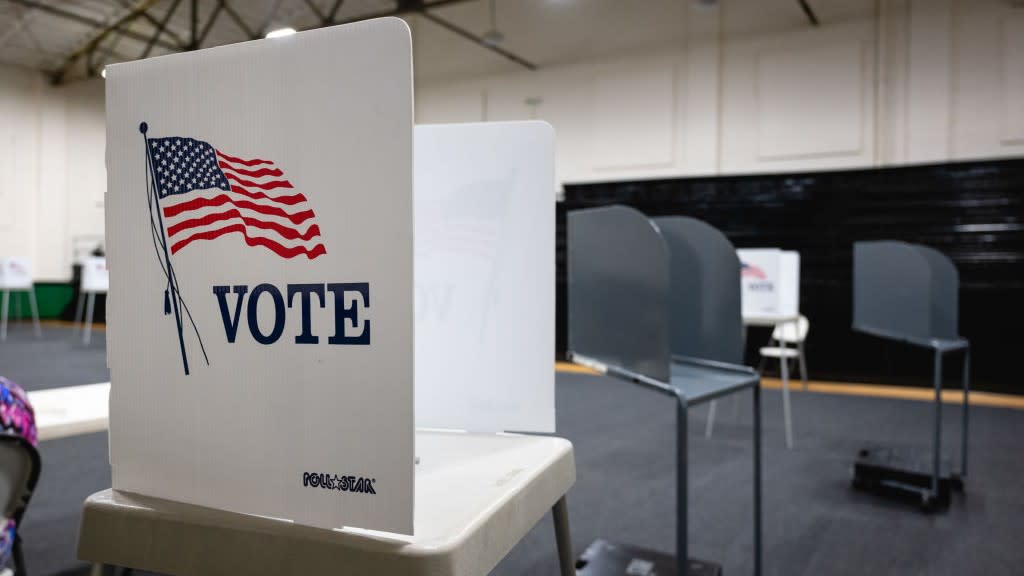How accurate are political polls?

- Oops!Something went wrong.Please try again later.
- Oops!Something went wrong.Please try again later.
As November 2024 nears, new data from pollsters about the presidential election is seemingly being released every day. These polls depict a variety of scenarios, from matchups with the potential GOP nominees to a head-to-head fight between President Joe Biden and former President Donald Trump.
Many of the national polls currently show Trump in the lead over Biden (though this is not exclusively the case, as was seen in recent polling in Pennsylvania that put Biden solidly ahead of Trump in the state). But the recent back-and-forth on this data begs the question: How accurate are political polls?
As recent years have proved, polling is often, sometimes heavily, incorrect. Case in point: Polling generated by HuffPost on Election Day 2016 concluded that Hillary Clinton had a 98% chance of beating Trump. While the polls that year were dramatically wrong, most polling throughout the 2020 election cycle correctly predicted that Biden would defeat Trump. So given that polling accuracy has been on both sides of the coin, how much trust should the public place in polls?
How are political polls taken?
Polls are used "because posing questions to every member of a community would be costly and logistically difficult," according to a report from CalTech. However, "a sample size of just 1,000 to 1,500 people can be enough to estimate national opinion in the United States with a high level of accuracy."
A common method used in polling is random sampling, in which pollsters "draw a random sample of participants from computer-generated lists of landline and cell phone numbers (increasingly, polls are also being conducted online)," CalTech added. This "gives everyone in the population an equal chance of being included or not."
But "different polling organizations conduct their surveys in quite different ways," the Pew Research Center reported in 2020. Pew noted that CNN and Fox News conducted polls over the phone, while CBS News, Politico and The Associated Press conducted polls using various online techniques.
How accurate are these polls?
Heavy criticism has been levied at polls in recent years, particularly in the last few rounds of presidential elections. Even in 2020, when most polls correctly predicted Biden's victory, "national surveys of the 2020 presidential contest were the least accurate in 40 years," Politico reported.
Does this mean that polls just aren't accurate? Not always, but they can present a different picture than reality. This is largely because "the real margin of error is often about double the one reported," Pew wrote. Many polls typically have a margin of error less than 3%, which "leads people to think that polls are more precise than they really are," the outlet added. But this margin "addresses only one source of potential error: the fact that random samples are likely to differ a little from the population just by chance."
There are at least three other identifiable sources of data errors that can come from poll taking, Pew added, but most polls don't calculate these metrics into their margins of error. The differing approaches in how polls are taken can also have "consequences for data quality, as well as accuracy in elections," Pew added. As a result, a 2016 study from The New York Times showed, the actual margin of error in most historical polls is closer to 6% or 7%, not 3%. This represents an error range of 12 to 14 data points, the Times said.
Nonetheless, polls can still be valuable and paint a widespread picture of Americans' feelings — and they are still sometimes on the money. Polling during the 2022 midterms was "historically accurate," FiveThirtyEight reported. This is partially because pollsters began "increasingly weighting surveys based on whom respondents recall voting for in a previous election, in addition to adjusting for standard demographics such as race and age," the Times reported.
This method has long been used to calculate polling in other countries, but is only recently gaining widespread usage in the United States. After the 2016 election, it was also found that pollsters underrepresented less-educated voters, which heavily skewed poll results. Since then, pollsters have "adopted education as an additional survey weight, and a cycle of accurate polls in 2018 seemed to reflect a return to normalcy," the Times added.
And while polling can't determine anything with certainty, it can "provide a nuanced picture of what a country, state or group thinks about both current events and candidates — and how that is changing," Texas A&M University political science professor Kirby Goidel wrote.

